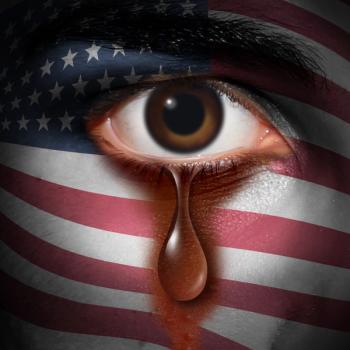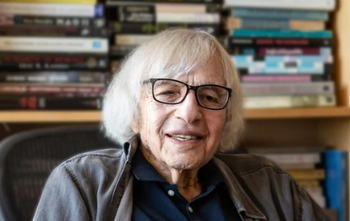
- Vol 35, Issue 5
- Volume 35
- Issue 5
Should Americans Be Happier Than They Are?
Why aren’t we Americans as happy as we should be, given all the wonderful things we have in our lives?
COMMENTARY
The man who is a pessimist before 48 knows too much; if he is an optimist after it, he knows too little.
Should Americans feel happier than they do? Despite the heroic efforts of Harvard psychology professor Steven Pinker, I remain unconvinced.
As a fellow humanist, I sympathize with Prof. Pinker’s predicament. Having amassed a bushel basket of data for his magisterial new book,
Here, I’m focusing on Pinker’s chapter, “Happiness,” which most engaged my thinking as a psychiatrist. I hasten to add that I am in broad sympathy with Prof. Pinker’s larger aims in the book, which are founded on the belief that knowledge and reason can enhance human flourishing. What humanistically inclined psychiatrist could argue with that? And yet, I am deeply skeptical of Pinker’s implicit claim that Americans ought to be happier than they are. Indeed, I think that a failure to appreciate the legitimate sources of our nation’s current sadness and angst will only delay our emotional recovery.
Pinker gives numerous examples to support his thesis that the US suffers from an “Optimism Gap.” Since 1992, Pinker notes, homicide rates in the US have declined sharply. Maternal mortality in the US has fallen dramatically since the 1950s. And Americans, on average, have been getting richer (despite the fact, as Pinker concedes, that “the rich got richer faster than the poor and middle class got richer”). Leisure time for American men and women, on average, has increased markedly since the 1960s. And, Pinker argues, for all the hand-wringing about “right-wing backlashes” the values of Western countries, including the US, have been getting “steadily more liberal” since the 1980s.
So what’s to complain about? And yet, as Pinker vividly puts it, Americans “. . . seem to bitch, moan, whine, carp, and kvetch as much as ever. . . .” and the proportion of Americans who report being happy has held fairly steady for decades. Pinker notes that there has been a “slight decline” since 1972 in the proportion of Americans saying they are “very happy.” Actually, data from the 156-country 2018 World Happiness Report2 show that the US ranks 18th in the world-a significant drop from 14th place in 2017.
To give Prof. Pinker his due: he bolsters his arguments with (count ‘em) 75 graphs and more than 30 pages of references. If, at times, he sounds like someone from the Murky Gulch Chamber of Commerce, trumpeting the town’s many virtues, Pinker is, nevertheless, an eloquent apostle of the Enlightenment-roughly the last two-thirds of the 18th century, known for its championing of “reason, science, humanism, and progress.” Indeed, Pinker is in the direct line of progressive optimists from Nicolas de Condorcet (1743–1794) to Barack Obama.
He reminds me, wistfully, of Ludovico Settembrini, the humanist pedagogue in Thomas Mann’s novel,
So why aren’t Americans happier?
Pinker offers a number of hypotheses, which I will not detail here, for America’s Optimism Gap. (Two examples: “People have . . . lost their comforting faith in the goodness of their institutions . . .” and “. . . the media and commentariat . . . could reflect on their own role in keeping the country’s anxiety at a boil.”) For the most part, Pinker seems to argue that if only we, misinformed Americans, would look at the facts, we would realize how truly well off we are.
And, to be sure, Americans have many blessings for which to be grateful. But while Pinker is quick to point out how our biases can distort our perception of how good things are, he seems unaware of his own selective presentation and interpretation of the evidence. Pinker’s biases are evident in at least 3 areas that impinge on mental health issues.
1 Pinker rightly debunks the myth that “suicide has been steadily rising and has now reached historically high . . . or epidemic proportions.” Indeed, data from the Centers for Disease Control show that, for the US population as a whole, rates of completed suicide in the US (all ages) were about the same in 2010 as they were in 1960 and 1980 (12.1, 12.5, and 12.2 per 100,000, respectively).4 However, over the past 15 years, the total US suicide rate has increased 24% from 10.5 to 13.0 per 100,000-a statistic Pinker does not cite.
While Pinker acknowledges that “suicide rates rise sharply during adolescence,” he doesn’t acknowledge that suicide among US teens and young adults has nearly tripled since the 1940s.5 Furthermore, between 1999 and 2014, the suicide rate among adolescents (aged 10–14) nearly doubled, with most of the increase occurring after 2007, and with the sharpest rise occurring in girls.6
It is probably not coincidental that there have been large generational increases in psychopathology (based on MMPI data) among American college students between 1938 and 2007, according to the
2 Pinker emphasizes the fact that, worldwide, life expectancy has increased markedly between 1771 and 2015, including in the Americas. But he does not discuss the fact that in the US, life expectancy has actually declined in recent years. Specifically, it declined 0.1 years between 2015 to 2016, following a
3 Rising income inequality in the US does not seem to trouble Prof. Pinker very much. He argues that income inequality per se is not the same thing as poverty; that “the majority of the human race has become much better off” in recent decades; and that, in any case, “. . . income inequality is not a fundamental component of well-being.” On this last point, I believe Pinker has overlooked substantial evidence to the contrary, though some of it probably emerged after the completion of his book.
For example, in a recent comprehensive analysis of income inequality and mental health,
Loneliness and social disconnection in the US
In his discussion of loneliness, Pinker heaps scorn on the “hysterical misconception” that “modern life [has] . . . set us drifting apart without human contact or emotion.” In support of his position, he provides a graph showing that, among US students (8th grade to college), loneliness has declined in the years from 1978 to 2011 (based on the UCLA Loneliness Scale). To be sure, there is little evidence of an “epidemic” of loneliness in the US, as sometimes claimed in the popular media, and reported rates of loneliness differ considerably, depending on the study methodology.
Unhappiness in the US has deeper roots
It is no great leap from these findings to the hypothesis that at least some of the increasing unhappiness Americans report is an understandable-and quite rational-response to high levels of social disconnection. But the problem goes deeper than that. As economist
. . . while America’s income per capita has increased markedly during the past half century, several of the determinants of well-being have been in decline. Social support networks in the US have weakened over time; perceptions of corruption in government and business have risen over time; and confidence in public institutions has waned.
Beneath these trends, still darker currents swirl through American culture. As columnist
The great challenge of our moment is the crisis of isolation and fragmentation, the need to rebind the fabric of a society that has been torn by selfishness, cynicism, distrust, and autonomy. At some point there will have to be a new vocabulary and a restored anthropology, emphasizing love, friendship, faithfulness, solidarity, and neighborliness that pushes people toward connection rather than distrust.
Admittedly, it is hard to quantify the sum total of selfishness, cynicism, and distrust in this country, much less to plot the figure on a graph. Yet to minimize the presence and impact of these negative feelings is to miss the opportunity of restoring America’s “happiness.” Unlike Prof. Pinker, I think the declining state of American happiness is largely a rational response to the mess in which “we the people” find ourselves. And yet, like Pinker, I believe things can get better. Witness the idealism of the students who survived the Parkland High School shootings, and who now protest the unconscionable gun-related carnage in this country.
In the end, perhaps the most “reasonable” stance is
This article was originally published on 4/5/2018 and has since been updated.
Disclosures:
Dr Pies is Editor in Chief Emeritus of Psychiatric Times, and a Professor in the psychiatry departments of SUNY Upstate Medical University, Syracuse, NY and Tufts University School of Medicine, Boston.
References:
1. Pinker S:
2. World Happiness Report, 2018.
3. Mann T.
4. National Institute of Mental Health.
5. Centers for Disease Control and Prevention.
6. Tavernise S. Young adolescents as likely to die from suicide as from traffic accidents. The New York Times. 2016.
7. Twenge JM, Gentile B, DeWall CN, et al.
8. Patel V, Burns JK, Dhingra M, Tarver L, Kohrt BA, Lund C.
9. Khazan O. How loneliness begets loneliness. The Atlantic. 2017.
10. Holt-Lunstad J, Robles TF, Sbarra DA.
11. Ong AD, Uchino BN, Wethington E.
12. Sachs JD. America’s Health Crisis and the Easterlin Paradox.
13. Brooks D. The death of idealism. The New York Times. 2016.
14. Pies R.
Articles in this issue
over 7 years ago
Where There’s Smoke, There’s Fireover 7 years ago
The Therapeutic Cannabis User: 5 Key Issuesover 7 years ago
Special Issues in LGBTQ Geriatric Psychiatryover 7 years ago
You Say Hello and I Say Goodbyeover 7 years ago
Psychogenic Purpuraover 7 years ago
Looking for Kama Muta in All the Right Placesover 7 years ago
Can We Prescribe Resilience?over 7 years ago
The TartsNewsletter
Receive trusted psychiatric news, expert analysis, and clinical insights — subscribe today to support your practice and your patients.











